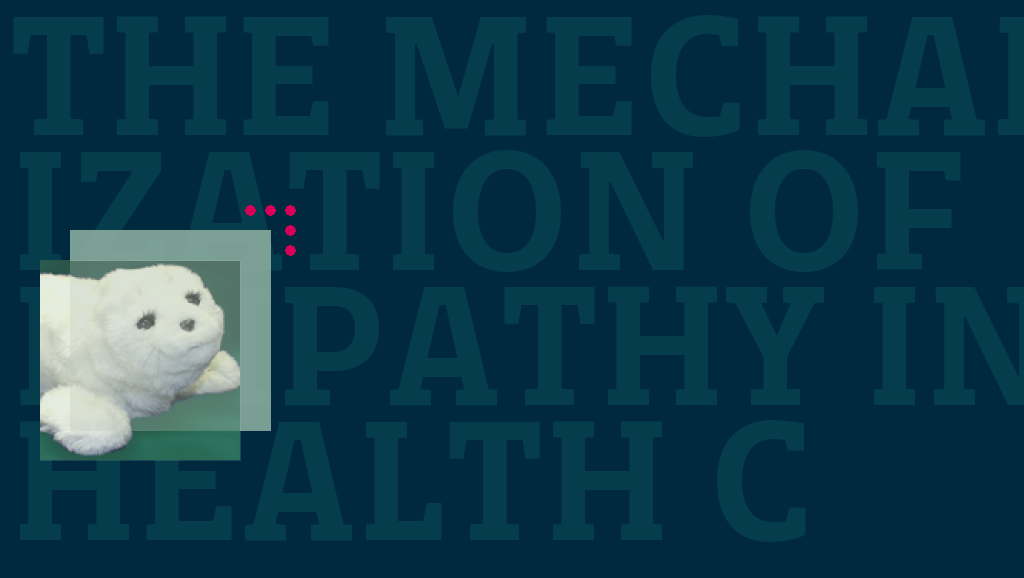An International Workshop organized by Luisa Damiano, Paul Dumouchel & Yoko Matsubara with the support of the Global COE Ars Vivendi.
———
Takanori Shibata, is Senior Researcher at Japan’s Institute of Advanced Industrial Sciences and Technology AIST (Tsukuba, Japan). He is the inventor of PARO, a robot that resembles a baby seal and that is used as a tool for psychological therapy, understood in a broad sense. PARO is presently the most extensively used psyco-therapeutic robot world-wide and, in the words of Dr. Shibata, it is the central instrument in what can be viewed as a form of “robot therapy” inspired by “pet therapy”.
———
Takanori Shibata
Robot Therapy
Conception and therapeutic applications of PARO
During the conference, Dr. Shibata presented essential aspects of the idea of a “Robot Therapy”. The project which led to the construction of PARO, a robot that has the shape of a baby seal, began in 1993. According to Dr. Shibata we can find in traditional Japanese mechanical dolls the ancestor of PARO, and in fact many Japanese robot specialists consider that “karakuri dolls” that were built by engineers during the Edo periods are the ancestors of modern robots. However the inspiration for this project came not only from engineered objects, but also from biological beings, pet animals that in many countries are used in therapy. The specific goal of PARO is an attempt to enrich “pet therapy” by implementing something similar in the context of interactions between humans and robots. Robots have the advantage in many contexts, like hospitals and nursing home for the elderly of being both safer and more hygienic than animals.
The pet-robot PARO has been conceived as a therapeutic instrument that can be used in treating various problems related to depression, solitude, stress, and communication. However through its many applications it has proven to have even wider scope of usage, in particular with patients suffering from dementia and with autistic children.
While designing it Dr. Shibata visited homes for old age persons, patients recovering in hospitals and analyzed the forms of often very limited socialization that is available to patients in such situations.
This led him to produce a small robot, which to some extent resembles a teddy bear, but which is endowed with functions that allows it to enter into or to stimulate affective relations that can be both intense and lasting. Covered with hand-made fur, weighing more or less as much as a human infant and endowed with large soft eyes PARO maintains a temperature that is similar to our. It has sensors that allows it orient its gaze and to move its head and tail in response to the action of the person who interact with it. It also responds to voice and moves when it is called by its name. When the batteries of PARO are empty it takes the appearance of a sleeping animal and it is recharged by using an electrical plug that has the form of a pacifier which is put in its mouth. When it is completely recharged it gives the impression of waking up before becoming completely functional. Early models of PARO could move around in space while more recent models can only shake their tail, lift and turn their head. Given that it often interacts with small children and older people this reduced mobility was chosen for security reasons.
Dr. Shibata presented a detailed and very impressive panorama of the different therapeutic uses of PARO and of the results that have been obtained. Not only is it very successful with persons who are either lonely or depressed, but it is also appreciated by couples, by older and less old people, and even nuclear families which, for different reasons cannot or do not what to own a cat or dog, enjoy PARO as a substitute. Interaction with PARO facilitates the recovery of patients who have had accidents or operations, most of all it helps the social skills of older people suffering from Alzheimer disease and of autistic children. Patients can rapidly develop an affective relation with the baby robot. Interaction with PARO augments the general social skills of these patients, but above all it improves their relation with their therapist. In a few cases there even was an improvement in the immune system of the patients. PARO can have a lasting positive effect on their psychological state of depressed persons. At times PARO has even at times successfully replaced medication!
Following his presentation, Dr. Shibata invited us to visit him in his laboratory at the AIST in Tsukuba where we interviewed him (next post).
















